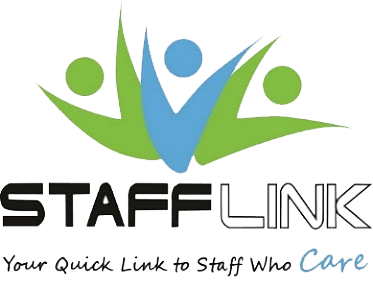Pandemic Compounds Missouri Nursing Shortage
An Editorial Update
Last week, I was talking to an executive of an organization who StaffLink provides contract registered nurses. We were discussing their own efforts to recruit nurses at this time and how difficult it has been to find staff. Both of us are about the same age, so we have been involved in recruiting nurses for health care organizations for 35-40 years each or 70-80 years collectively! We shared our thoughts about this being one of more difficult recruitment markets that we have ever seen.
Although 2020 and 2021 are proving to be challenging years, the nursing shortage for both registered nurses (RNs) and licensed practical nurses (LPNs) existed pre-pandemic.
I have attached articles dating back to 2014 documenting the nursing shortage in Missouri. The shortage is not just a Missouri issue. Articles that I did not attach clearly demonstrate that it is a problem from coast to coast and an international crisis.
The most comprehensive information on what is going on in the Missouri health care workforce can be found in the annual Workforce Report from the Missouri Hospital Association. The Missouri Health Care Association (Nursing Homes), Missouri Nurses Association, and Board of Nursing do not have any nursing workforce data available.
Here is what I found via the Missouri Hospital Association data. The need for healthcare workers, skilled and non-skilled (not just nurses) in Missouri, has grown by more than 50% since 2000 and is expected to grow nearly another 30% by 2030. The biggest need will be for nurses. More than 40% of all hospital nurses in Missouri are employed in the St. Louis region.
Most of that growth in the state is in more populated areas like St. Louis, Kansas City, Springfield and Columbia. With St. Louis and Kansas City leading in the growth.
Supply has not been keeping up with the demand.
The 2020 vacancy rate for hospital nurses increased in the state by approximately 2%, from 9.1% in 2019 to 11%.
The 2020 hospital turn-over rate in Missouri for RNs was 16% and for LPNs was an astonishing 28%. Based on my years of experience in the industry, I am pretty certain the turn-over rate in some other health niches, such as nursing homes, was possibly higher for both nursing categories.
Prior to the pandemic, one of the reasons often noted for the nursing crisis was the limited availability of spots for students in nursing schools due to the limited number of nurses with the appropriate credentials available to teach in nursing programs. There has been a push nation-wide to advance more BSNs on the career path for becoming professors and instructors.
Missouri has 29 four-year nursing programs (BSN-RN), 36 two-year programs (Associate degree-RN) and 43 practical nursing degree programs (LPN). The most recent BSN program was opened in the 2018-19 school year by William Woods College in Fulton, MO. They have partnered closely with Fulton State Hospital, which has a higher than average vacancy rate.
Another, pre-pandemic issue, is the “graying” of the nursing profession. More than a third of nurses are over 55 years of age. Many are retiring or considering retiring from nursing. Bed-side nursing requires physical exertion. Sometimes as nurses mature, they desire to consider other desk-top nursing options, such as over the phone case management, phone triage, etc. Those careers are necessary, but they do move more experienced nurses away from the bed-side, so you lose both their expertise and actual hands at the bedside in providing needed patient care.
Another pre-pandemic statistic which causes concern is that one-fifth of all newly graduated nurses leave their job within the first year. This was true Missouri and in other states. That does not mean they have left nursing. There is not information to say where they have gone. It is valid to suspect that they were not satisfied with their job and perhaps even with the nursing field. Being a new graduate nurse in stressful. New graduate nurses are called on to make the same life and death decisions on a daily basis that their more seasoned counterparts are making. Hospitals in Missouri have tried in very recent years to address this concern by enrolling new graduate hires into a “residency” that provides them more support, including ongoing continuing education, a nurse mentor, group support meetings, and more. They don’t want new grads to feel like they are out there “flying by the seat of their pants”.
Pandemic Compounds Missouri Nursing Shortage
In 2020, in the heart of the pandemic, StaffLink had several large requests for nurse staffing. We have found these requests challenging to fill. We had a nursing home call for assistance on all shifts and days. The facility had 75+ positives among staff and residents. We knew we were not going to be able to help them. Several weeks before they had called, I had multiple staff turn-down working at a long-term care community where there were no positives in the building where the staff would be assigned, but there was ONE positive on their campus in another building. They expressed significant concerns about be exposed to the virus.
During the pandemic, we have generally had fewer applicants respond to ads for nursing positions than prior to the pandemic. Sometimes we have no responses to an ad. That is unusual. Occasionally, we do have a good number of responses, but we are frustrated with the applicant pools follow up in completing the required application process. Frequently, we are hearing crickets. Recruiters across the industry are experiencing this malady with applicants. It appears more prevalent over the last several months.
As the pandemic continues, those that recruit and work with nurses are hearing additional concerns and expressions of burn-out from nursing professionals. They included the following:
- Concerns about catching the virus at work and taking it home to their family members
- Concerns about caring for non-COVID patients with no family advocate, support or visitors, because they could not visit
- Burn out and stress from caring for COVID patients, who were fearful and dying without any family present
- Burn out from working more hours than they really wanted to work
- Burn out from being understaffed
- Concerns about have access to appropriate PPE
- Additional child-care concerns that were a direct result of schools being closed due to the pandemic
- And, frustration with the putting themselves at risk for people you did not care about the risk of catching COVID-19, and refused to wear mask and social distance
My client and I agreed that the additional issues and concerns that have arisen directly from the pandemic, and which have made recruiting more challenging, will be behind us. We both hope that the burn out due to the pandemic will have not permanently driven nurses from the field.
In the meantime, StaffLink found a nurse who is working part-time elsewhere with expertise in their niche, who is seeking part-time hours. Hopefully she can start by next week. It may be a win-win-win for all three of us.
Post-pandemic, the health care industry will continue to address the pre-pandemic issues that created the shortage in the first place. The need for more nursing instructors, new grads being dissatisfied with career, addressing the annual nurse turn-over rate and the graying of the profession.
2020 Workforce Report – MHA (mhanet.com)
Facing the Nursing Shortage – Missouri Health Careers
Federal Coronavirus Data Show Health Care Staff Shortages Plague Hospitals : Shots – Health News : NPRPandemic takes a toll on Missouri health-care workers (examiner.net)
Nursing shortages reach all-time high for Missouri hospitals (beckershospitalreview.com)
- StaffLink Celebrates 38 Years in Business! - March 30, 2025
- What Is the Hourly Cost for Home Health in 2025? - March 12, 2025
- Seeking Retirees and Mature Persons to Provide In-home Care to Seniors - February 26, 2025

